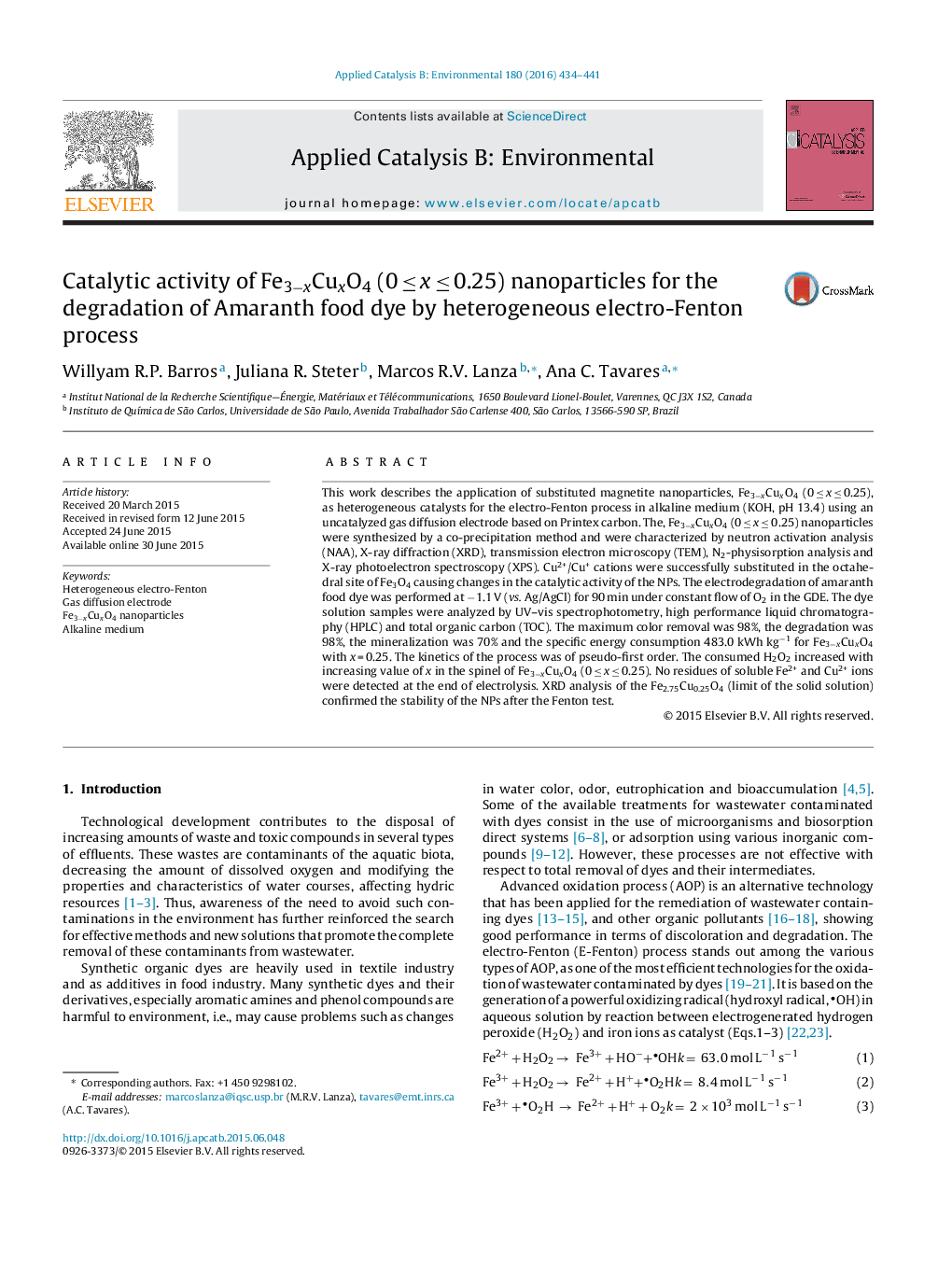| Article ID | Journal | Published Year | Pages | File Type |
|---|---|---|---|---|
| 45261 | Applied Catalysis B: Environmental | 2016 | 8 Pages |
•Fe3−xCuxO4 (0 ≤ x ≤ 0.25) NPs were synthesized by a simple co-precipitation method.•The Fe3−xCuxO4 (0 ≤ x ≤ 0.25) NPs were used as catalysts for the E-Fenton process.•The catalytic activity of the NPs increased with x due to the higher Cu2+/Cu+ content.•The degradation and mineralization of AM dye were maximal for Fe2.75Cu0.25O4.
This work describes the application of substituted magnetite nanoparticles, Fe3−xCuxO4 (0 ≤ x ≤ 0.25), as heterogeneous catalysts for the electro-Fenton process in alkaline medium (KOH, pH 13.4) using an uncatalyzed gas diffusion electrode based on Printex carbon. The, Fe3−xCuxO4 (0 ≤ x ≤ 0.25) nanoparticles were synthesized by a co-precipitation method and were characterized by neutron activation analysis (NAA), X-ray diffraction (XRD), transmission electron microscopy (TEM), N2-physisorption analysis and X-ray photoelectron spectroscopy (XPS). Cu2+/Cu+ cations were successfully substituted in the octahedral site of Fe3O4 causing changes in the catalytic activity of the NPs. The electrodegradation of amaranth food dye was performed at −1.1 V (vs. Ag/AgCl) for 90 min under constant flow of O2 in the GDE. The dye solution samples were analyzed by UV–vis spectrophotometry, high performance liquid chromatography (HPLC) and total organic carbon (TOC). The maximum color removal was 98%, the degradation was 98%, the mineralization was 70% and the specific energy consumption 483.0 kWh kg−1 for Fe3−xCuxO4 with x = 0.25. The kinetics of the process was of pseudo-first order. The consumed H2O2 increased with increasing value of x in the spinel of Fe3−xCuxO4 (0 ≤ x ≤ 0.25). No residues of soluble Fe2+ and Cu2+ ions were detected at the end of electrolysis. XRD analysis of the Fe2.75Cu0.25O4 (limit of the solid solution) confirmed the stability of the NPs after the Fenton test.
Graphical abstractFigure optionsDownload full-size imageDownload as PowerPoint slide
